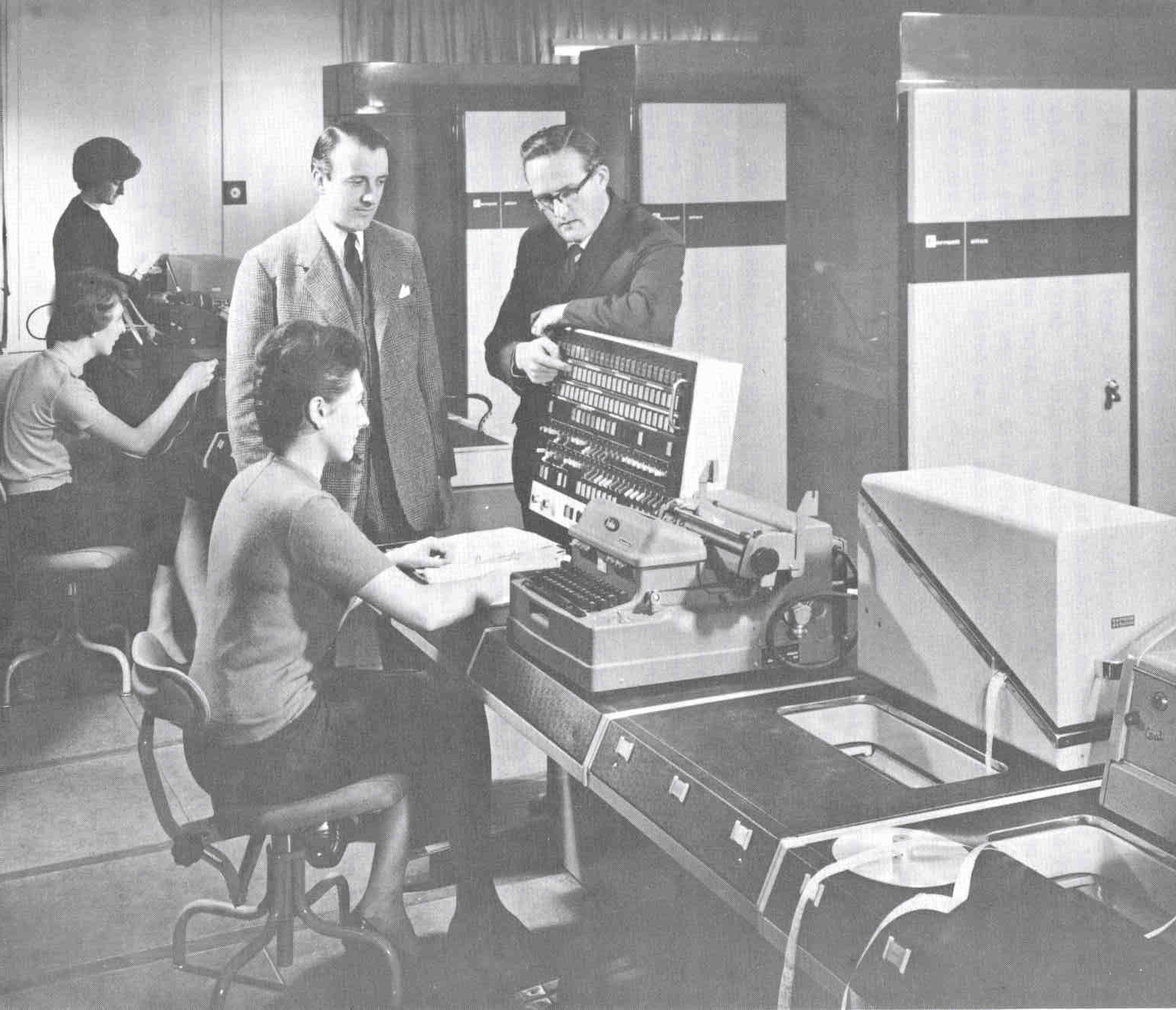


The first Atlas was installed in Manchester University. The machine was a joint development between Ferranti and the University. The machine was inaugurated on 7th December 1962 and came into general use in January 1963 (without drums).
London University, who had a machine on order, used the machine on a Courier service quite early on.
Atlas was a major project for a University to undertake. The value of the Manchester machine as delivered was £1.5M, a huge sum at the time. The development of Atlas ensured that Manchester would be designated as one of the three Regional University Centres by the Flowers Report, as was London who also had an Atlas.
The Manchester Atlas provided a service to Nottingham, Edinburgh and London and was operational until 1972 when it was replaced by MU5.
The collaboration with Ferranti was on the basis that Ferranti would have half the machine time and Manchester the other half. The maintenance cost was 7.5% of the capital value which was a charge of £100,000 to Ferranti from the university.
The Manchester machine consisted of 10 shelves each with 50 printed circuit boards. It contained 60,000 transistors and 300,000 diodes.